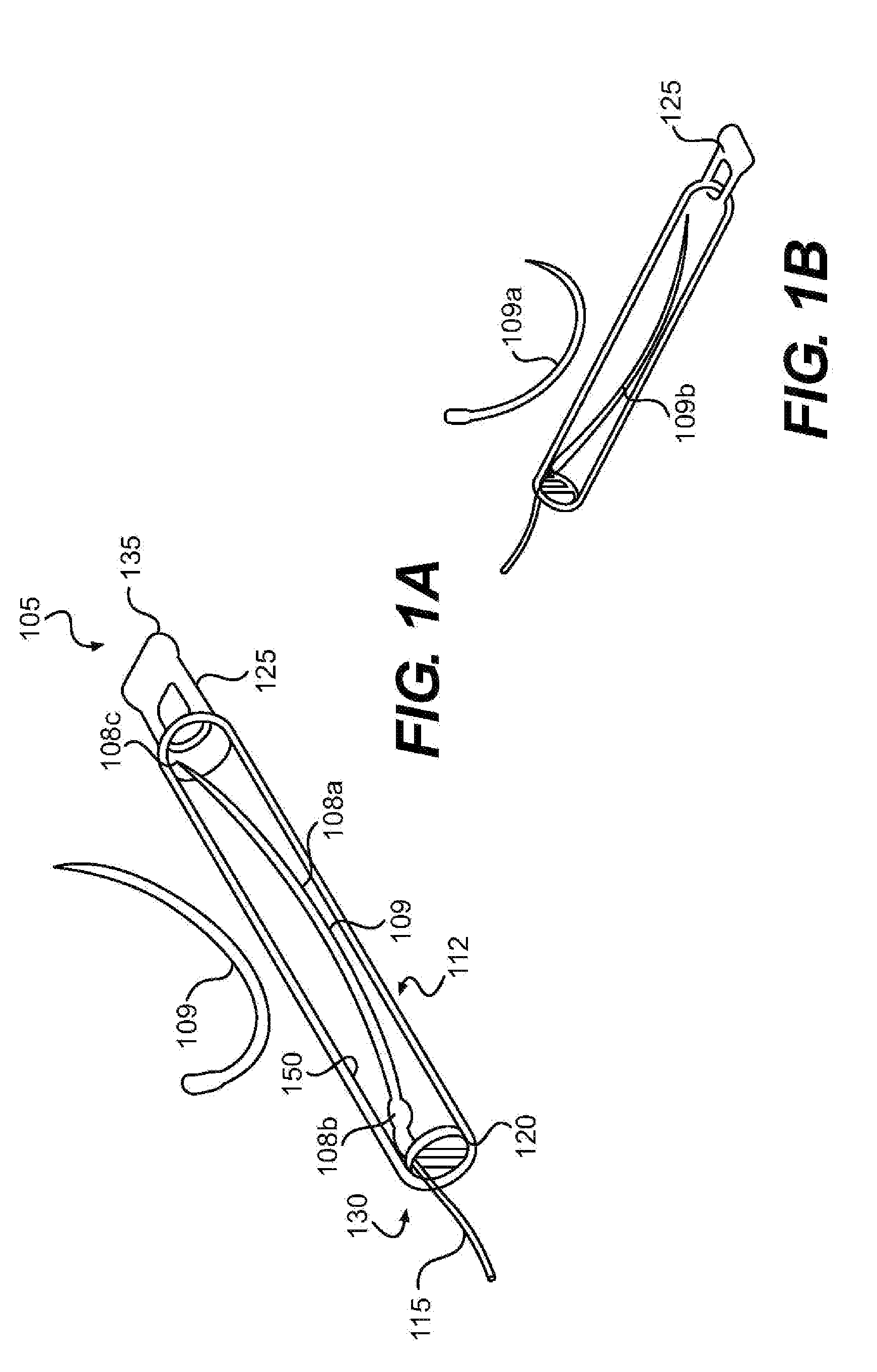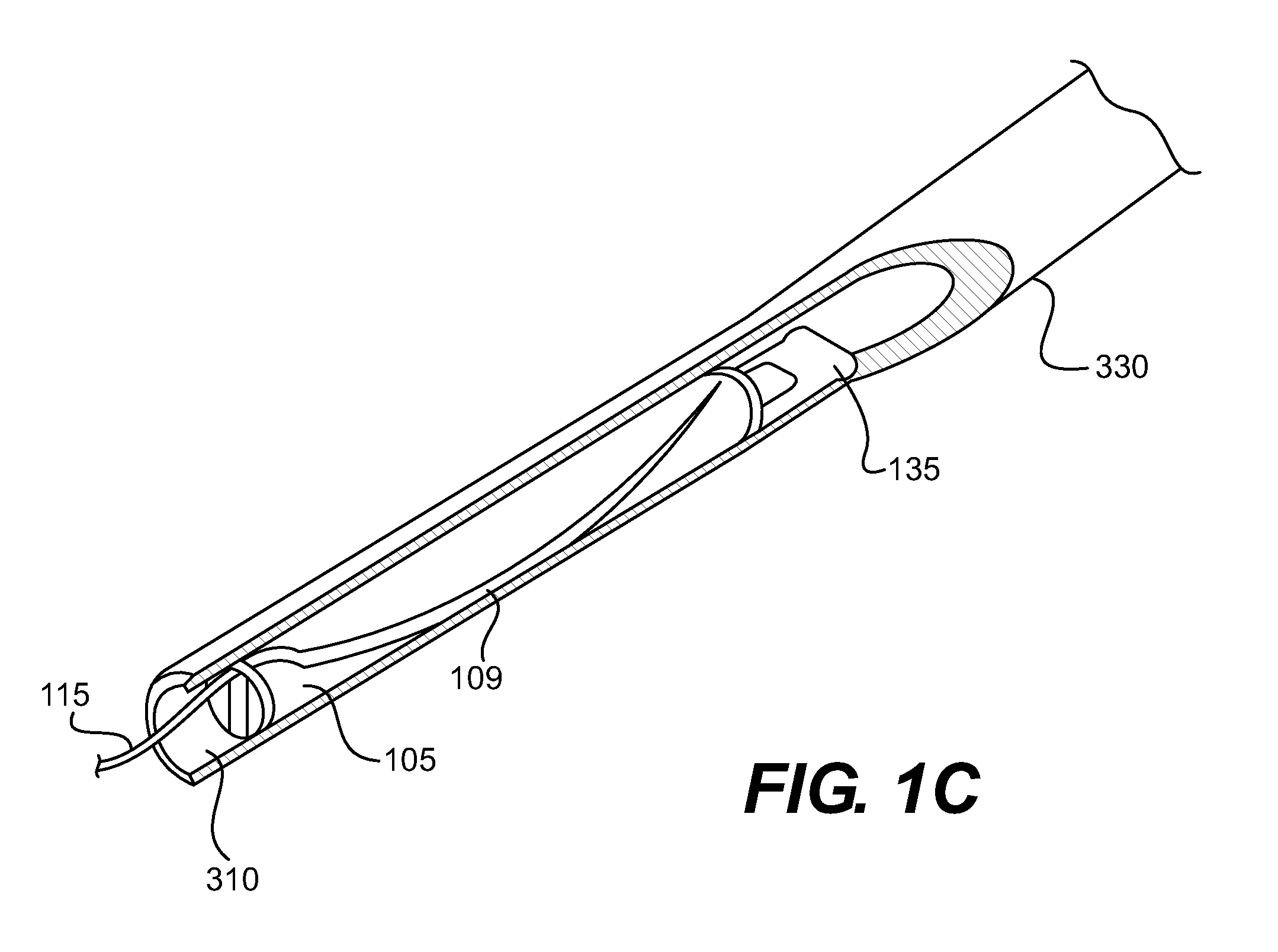Tool delivery systems and methods of use
a tool and tool technology, applied in the field of surgical tools, can solve the problems of limited scale of medical devices without the loss of functionality, inability to scale medical devices, and difficulty in delivering surgical instruments, etc., to achieve the maximum use of the guide tube channel width, reduce and reduce the effect of the likelihood of flexible tools snagging the walls
- Summary
- Abstract
- Description
- Claims
- Application Information
AI Technical Summary
Benefits of technology
Problems solved by technology
Method used
Image
Examples
case 105
[0027]Case 105 can comprise an elongate body 112 with a first end 135 and a second end 130. In one aspect, first end 135 is a proximal end and second end 130 is a distal end. Body 112 can have an outer shape that corresponds in size and shape to the inner surface of a lumen extending through an elongate flexible instrument, such as a guide tube. The outer surface of case 105, in one aspect, can have a generally cylindrical shape. Alternatively, case 105 can correspond in size, but not shape, to the interior of a guide tube lumen. For example, the outer surface of the case can have a non-cylindrical shape, such as a polygonal cross-sectional shape or an irregular cross-sectional shape. It can accommodate a particular tool by having more space at one portion than at another portion of the container. Indeed, the body need not have a constant cross-sectional dimension. For example, body 112 can taper, be pill shaped, or otherwise have a variable diameter (i.e., width).
[0028]In one embod...
PUM
 Login to View More
Login to View More Abstract
Description
Claims
Application Information
 Login to View More
Login to View More - R&D
- Intellectual Property
- Life Sciences
- Materials
- Tech Scout
- Unparalleled Data Quality
- Higher Quality Content
- 60% Fewer Hallucinations
Browse by: Latest US Patents, China's latest patents, Technical Efficacy Thesaurus, Application Domain, Technology Topic, Popular Technical Reports.
© 2025 PatSnap. All rights reserved.Legal|Privacy policy|Modern Slavery Act Transparency Statement|Sitemap|About US| Contact US: help@patsnap.com



